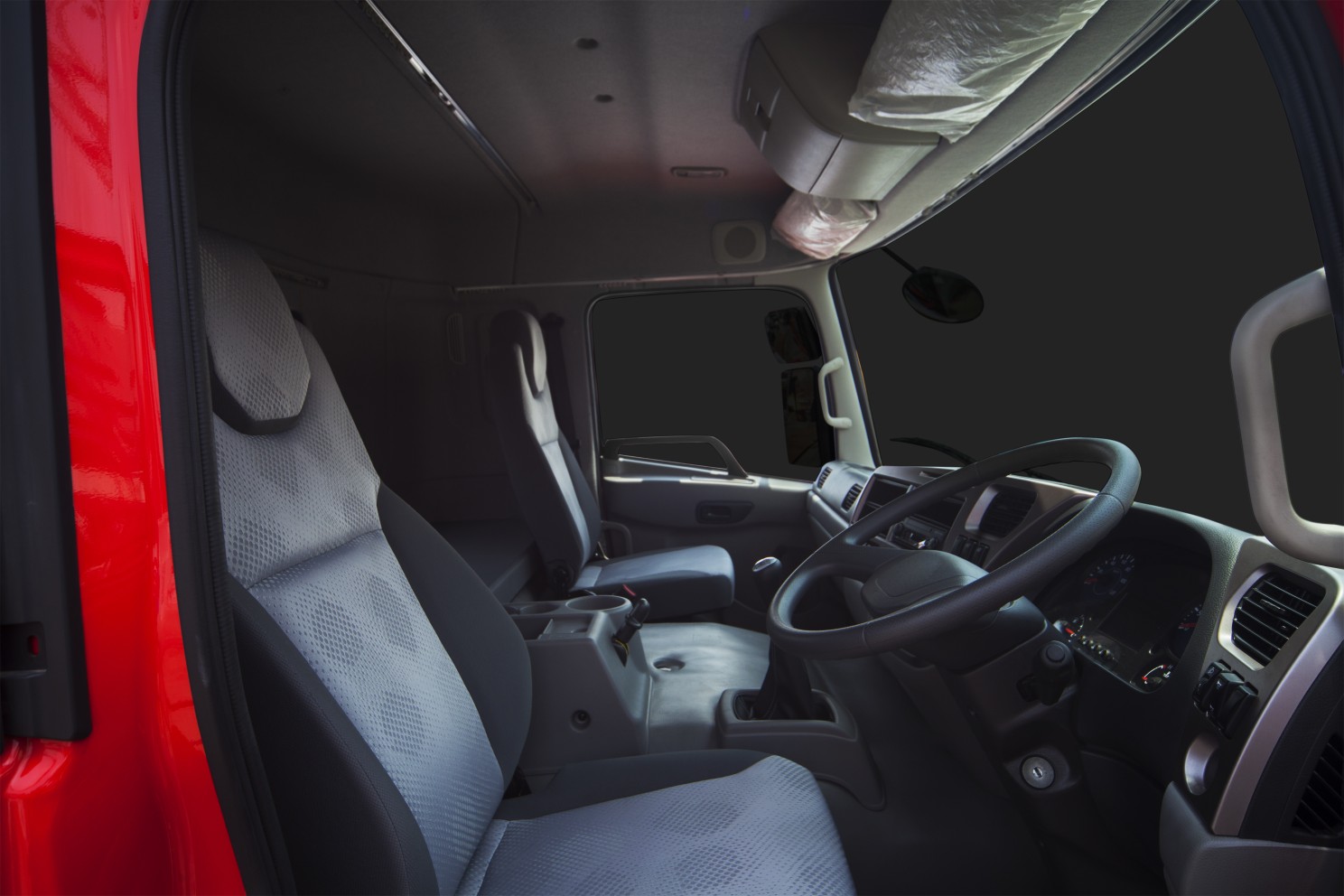
Susie Jones
Cinco consejos para que la cabina de tu camión sea tu hogar
Creado: 22/08/2024
•
Actualizado: 22/08/2024
Como camionero, pasas muchas horas en la carretera, lo que a menudo puede resultar cansado y monótono, así que, naturalmente, te gustaría que tu entorno, la zona en la que estás estacionado más tiempo, se sintiera como un segundo hogar. Por lo tanto, muchos conductores tienden a personalizar y decorar sus cabinas, pero ¿cuáles son las mejores maneras de conseguir que su cabina dormitorio se sienta como un hogar lejos de casa? Hemos recopilado cinco consejos que le ayudarán a conseguirlo.
Decoración
Una de las mejores formas de personalizar su cabina es añadir adornos que le recuerden a su hogar. Las decoraciones también le permiten añadir estilo y color.
Ropa de cama y almohadas - Añade un toque personal a tu ropa de cama y almohadas eligiendo algunas que tengan un color o un dibujo que te guste. Esto puede hacer que tu cabina se sienta más acogedora y menos estancada.
Fundas de asiento - Las fundas de asiento suelen estar disponibles en diferentes colores, diseños y materiales que darán vida a su cabina. No sólo harán que la cabina resulte más acogedora, sino que también protegerán el interior del desgaste, la suciedad y las salpicaduras. Amazon suele tener una gran selección de colores disponibles.
Alfombras, cortinas y persianas - Elegir unas alfombras y unas cortinas puede transformar el interior de tu cabina. Las cortinas no sólo añadirán un valor estético, sino que también te ayudarán a dormir bien por la noche.
Fotos, pósters y obras de arte: estos objetos no ocupan mucho espacio en tu cabina y pueden hacer que se sienta como en casa al instante. Utiliza ganchos de comando para una instalación sin daños.
Entretenimiento: Al final de tu jornada de conducción, relájate como lo harías en casa viendo la televisión, un DVD o transmitiendo algo en tu portátil. Necesitarás WiFi para poder ver streaming, asegúrate de consultar nuestra página de mapas para saber qué paradas ofrecen este servicio.
También puedes crear un punto de acceso para tu smartphone que utilice los datos de tu teléfono para la transmisión. Los libros y las revistas son otra forma estupenda de mantenerte entretenido tras un largo día de conducción. A veces, una simple videollamada a amigos o familiares puede relajarte y hacerte sentir como en casa.

Confort
Pasas mucho tiempo en la cabina, así que es importante no renunciar a la comodidad. ¿Por qué no invertir en lo siguiente?
Sobrecolchón - Dormir bien es crucial para su seguridad y la de los demás. Invertir en un buen sobrecolchón te garantizará una zona cómoda para dormir.
Asiento de conductor ergonómico: la mayor parte del tiempo lo pasarás en el asiento del conductor, por lo que es importante que éste sea lo más cómodo y cómodo posible. Invierte en un asiento de conductor ergonómico o en un cojín que apoye tu espalda durante esas largas horas.
Almohadas y mantas adicionales: como ya hemos dicho, comprar ropa de cama y cojines de un color o con un estampado que te guste puede hacer que tu cabina parezca más un hogar. Considere la posibilidad de comprar almohadas y mantas adicionales para añadir un toque aún más personal a la cabina y el máximo confort.
Área de cocina/electrodomésticos
Añadir una mininevera o un microondas a su cabina puede permitirle preparar la comida como lo haría en casa, por lo que no tendrá que depender de las paradas de camiones ni de comer fuera. Le sugerimos que piense qué artículos necesitaría en esta zona, por ejemplo, si es un bebedor de café, intente conseguir una pequeña cafetera. Utilizar el área de la cocina y los electrodomésticos no sólo evitará que gastes una fortuna en comer fuera, sino que también repercutirá positivamente en tu salud general.
Mantén el orden
Vivir en un espacio pequeño puede desordenarse muy rápidamente. Invertir tiempo y esfuerzo en una rutina de limpieza regular puede hacer maravillas por tu salud mental y permitirte trabajar de forma más eficiente y eficaz. Asegurarte de que tienes zonas específicas para tus cosas te ayudará a conseguirlo y ProDrivers tiene algunos consejos excelentes para mantenerlo todo organizado.
¿Cómo afrontan el aburrimiento los camioneros?
El aburrimiento no sólo afecta a la satisfacción laboral, sino también a la seguridad en el trabajo. Hay muchas formas de que los camioneros se entretengan en la carretera.
Música y podcasts: La música es una forma estupenda de mantener entretenidos a los conductores durante los viajes largos. Crear una lista de canciones favoritas para escuchar puede reducir instantáneamente el aburrimiento. Los podcasts son una forma estupenda de cambiar de tema: muchos de ellos ofrecen consejos, ayudan a aprender una nueva habilidad o simplemente entretienen.
Estirar las piernas: Parar y bajarse del taxi para estirar las piernas puede desterrar el aburrimiento al instante. Las paradas regulares también pueden aumentar tu energía.
¿Dónde duermen los camioneros?
Desde el 1 de noviembre, los camioneros del Reino Unido que hacen descansos semanales en cabina deben hacerlos en áreas de descanso adecuadas. Debido a la escasez de éstas, algunos conductores descansan en aparcamientos que suelen ser inseguros. Por lo tanto, encontrar un lugar seguro y tranquilo donde aparcar para descansar es vital. Utilizando nuestra aplicación intruck o visitando nuestra [página de mapas] (https://snapacc.com/map/) podrá encontrar un aparcamiento para camiones cerca de usted y ver qué instalaciones se ofrecen.
¿Cómo afrontan los camioneros la soledad?
Aunque ser camionero tiene muchas ventajas, uno de los inconvenientes del sector puede ser la soledad. Puede ser un problema para muchos conductores que se sienten aislados por la naturaleza de su trabajo. Hacer planes para mantenerse en contacto con amigos y familiares puede dar a los conductores un impulso cuando están en la carretera. Los foros de camiones, los grupos de Facebook y las salas de chat son ideales si quieres formar parte de la comunidad de camioneros. All Trucking tiene algunos consejos fantásticos para ayudarte a combatir la soledad como camionero en la carretera.
Hacer que su cabina de camión se sienta como en casa requiere un poco de esfuerzo y creatividad, pero los beneficios de hacerlo harán que sus largos viajes sean mucho más fáciles. Es importante recordar que los pequeños detalles pueden marcar una gran diferencia en su espacio vital, y seguir los consejos anteriores le permitirá hacerlo confortable y acogedor. ¿Cómo consigues que tu cabina se sienta como un hogar lejos de casa?



